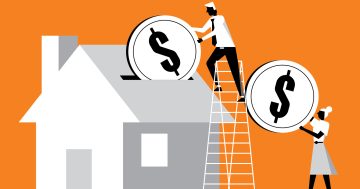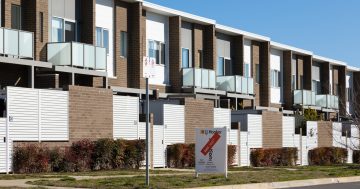Luke Harris and Matthew Bateman* believe it is never too late to start getting rich — but the way you do it will depend on where you’re at in life.
 No matter what your age, the actions (or inactions) you take are either helping or hindering your ability to create real wealth.
No matter what your age, the actions (or inactions) you take are either helping or hindering your ability to create real wealth.
The earlier you start your journey the better the outcome.
Accumulating growth assets such as properties, businesses, or shares that increase in value over time, means that in retirement those same assets may be used as replacements for income from work.
Ages 15-to-25:
Normally at this age you are just finding your way in the world.
When you just start out in the workforce, or work part-time while studying, you may not earn a whole lot of money, so it may seem implausible to start thinking about retirement.
Any money you earn will normally be allocated to things like paying rent/board, going out, buying a wardrobe of new clothes, getting a phone and so on.
However, there are a number of really practical things you can invest in at this age.
Invest in your education. It is never too early to start to learn about investing and there are many low-cost or free resources to help.
Learn how to create a budget (and stick to it).
A valuable skill is to keep a handle on how much you earn versus how much you spend.
Ages 26-to-35:
You’ve probably been in the workforce for a few years and hopefully you are starting to get on top of your personal finances.
Perhaps, you have even joined up with a life partner, and have now doubled up your income potential.
So, what can we do at this age to get ahead?
Buy the least expensive car that your ego can afford.
Cars are generally a depreciating asset, meaning that their value starts dropping as soon as you drive it off the showroom floor.
Consider driving a less expensive (but safe and serviceable) second hand car and allocate those additional funds towards growth assets instead.
At this age it may be more advantageous, both financially and from a lifestyle perspective, to buy an investment property before buying your own home.
That is rather than buying your first home you buy your first investment property instead and let the tenant and the tax man help you pay for it.
Ages 36-to-45:
Even if you are more focused on raising the kids, what can you do to keep moving forward?
Pour any excess income into your offset account.
Having your money readily available via a line of credit, or offset, facility means you should have the flexibility to absorb any of life’s unexpected bills.
A good quality investment property, after accounting for the rent from the tenant and any tax deductions, may only require $20, $50 or $100 a week to own in partnership with a lender.
Or the right property might even put a similar amount of money back into your pockets each week.
Perhaps now is also the right time to look at rebalancing your portfolio or reducing your debt levels to provide for the income you will need to fund your ideal lifestyle into retirement.
We travel all around Australia educating thousands of people every year on how to use property to better help them achieve their financial goals.
We are consistently shocked with how few people actually have a considered property investment plan.
Unfortunately, decades of financial and banking scandals, have shown us that it is can be hard to know who and what to trust.
That is why we always recommend that you increase your knowledge base and get well educated in any markets you may want to be investing into.
*Matthew Bateman and Luke Harris are co-founders of The Property Mentors, a Melbourne-based business comprising of property professionals. Their new book, Let’s Get Real, is now available.
This article first appeared at www.news.com.au











